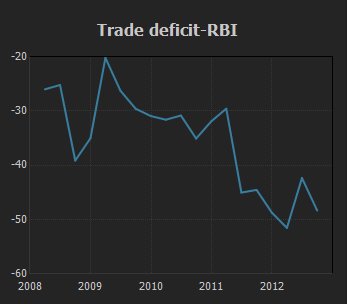Dividend Yield Ratio: A Complete Guide
Garota de Programa Ribeirão Preto - SP
Perfil
- Cidade: Ribeirão Preto - SP
- Eu Sou:
Apresentação:


This annual profit is calculated as per the face value of the share and not the market value. The market value of the shares is decided as per the market conditions, which is dynamic while face value remains static. When you multiply the outstanding shares with the market value, you get the company’s market capitalization. Similarly, when companies announce a dividend, it is issued against the face value rather than the market price. If a company with a face value of ₹10 and a market price of ₹1000 announces a dividend of 100 percent of the face value, it means a dividend of ₹20 per share.
- Draw in Investors – Several investors value dividend payments and see them as an income stream.
- A company may pay dividends in various forms, but these are the most prominent ones.
- A consistent ratio depicts that the company may pay a similar percentage of dividend in the current year too.
- A company pays dividends in different forms to its shareholders.
- FCFE is available first to the lenders and then to equity holders.
A dividend is a portion of a company’s profit that is paid back to shareholders as return on investment. Normally, companies that pay regular dividends are financially stable companies with a track record and pedigree. Utility stocks and consumer discretionary stocks are classic examples of companies that traditionally pay healthy dividends.
How to calculate dividend yield using a dividend yield calculator?
And to be eligible for dividends payouts, you must have a demat account and invest in dividend-paying stocks. By analyzing the current and past price movements of a stock, investors can determine the dividend yield ratio and use this information to identify potential trading opportunities. For example, if a stock is currently trading at $50 per share and the annual dividend payment is $2, the dividend yield ratio would be 4%. For investors who want to generate ongoing passive income from their investments, dividends are crucial.

Thus, it is imperative for any investor to understand the concept of dividend growth rate in stock markets. Along with knowing the key concepts of stock market trading, you should also select a trusted and reliable financial partner. In the last issue we had discussed about the DCF model of valuation which helps investors to know the present value of future earnings to arrive at the fair value of their investments. In this issue we will discuss another method of valuation which is known as the dividend approach to the cost of equity capital. Before we explain the method let us first understand what is cost of equity capital. It is the return expected by equity shareholders on the investments made by them in a company in order to retain the market price of the share they have invested in.
Dividend Per Share Formula
However, generally markets do prefer high dividend yield stocks as it indicates the company has cash to pay out. Thus, directly or indirectly, investors eventually look at the future dividend potential when investing in a stock. It logically follows that if the value of a stock is directly based on its expected future dividends, its price should be equal to the sum of all future dividends. This is a perfectly accurate deduction, except for two things. It would require assumptions about income, expenses and dividend payout ratio (i.e. the proportion of net income that will be distributed as dividend) for all future periods. Stock Brokers can accept securities as margin from clients only by way of pledge in the depository system w.e.f. September 1, 2020.
Understanding what the term dividend per share means in this context is worth noting. Public corporations sometimes declare dividends by the total amount of money paid to shareholders, even if the dividend yield is computed on a per-share basis. Even though some businesses will break out the figures, it’s important to comprehend the precise formula used to determine dividends per share.
However, a high DPS is good if an investor is dividend sensitive. A 2% to 6% is generally considered a good dividend yield ratio in the stock market. A recession or bad market should not prevent a good company from paying dividends to its shareholders. The calculation of dividend per share tells how profitable a company is. Generally, they are paid in cash, but if the company is low on cash, it can also pay in property, stock, bonds, scrip, etc.
Investments are taxed at varying rates depending on the country; some just tax dividends while others charge capital gains. Investments are impacted by taxation since it lowers after-tax income. Because the latter has less need for internally produced cash flows, a firm with more profitable investment prospects would often pay fewer dividends than one with fewer opportunities.
But do you know what dividends actually are and how are they calculated? A dividend per share is a basic yet insightful financial ratio that can be used to analyze a company’s success. Investors and the company’s management might both benefit from using it. For instance, firm A has distributed yearly dividends totaling Rs. 20,000 over the past years. Outstanding shares at the beginning of the time period were 4000, and impressive shares at the end were 7000. Find out how many shares are outstanding – The number of outstanding shares may generally be found on the company’s balance sheet.
Such companies attract investors like no other, as they provide a unique opportunity to grow your capital in multiple ways. DPS is a financial ratio that helps investors assess a company’s financial health, performance, stability, shareholder value, and long-term growth. A stronger dividend payout makes stocks attractive to investors, increasing their market value. For some investors, dividends are the primary determinant of buying stocks.
How is dividend on shares calculated?
To calculate dividend yield, all you have to do is divide the annual dividends paid per share by the price per share. For example, if a company paid out around INR 412 in dividends per share and its shares currently cost INR 12,370, its dividend yield would be 3.33%.
In case of non allotment the funds will remain in your bank account. Diluted EPS is the refined version or a modified version of the calculation of correct EPS. It also considers all the convertible securities ( convertible debt, preference shares, etc.) In the calculation of EPS.
How to Calculate Dividend Yield Ratio?
Any Grievances related the aforesaid brokerage scheme will not be entertained on exchange platform. We do not sell or rent your contact information to third parties. Pay 20% or “var + elm” whichever is higher as upfront margin of the transaction value to trade in cash market segment. There are five types of EPS; Reported EPS, Ongoing, book value, retained, and cash.There are six types of DPS; cash, bond, scrip, property, liquidating, and stock. Pay 20% upfront margin of the transaction value to trade in cash market segment. Kotak securities Ltd. having composite licence no.CA0268 is a Corporate Agent of Kotak Mahindra Life Insurance Company Limited and Kotak Mahindra General Insurance Company Limited.
How do you calculate dividend rate?
The dividend yield, expressed as a percentage, is calculated by dividing the annual dividend per share (DPS) by the current market share price.
If the dividend yield ratio indicates that the company is paying out a high percentage of its profits in dividends, this may be a sign that the company is doing well financially. By considering a company’s cash flow and working capital, investors can evaluate its financial stability. A profitable business can cover all of its costs in the event of unforeseen difficulties. The dividend yield ratio is an important measure for investors as it can help them to evaluate investment opportunities and make more informed decisions. For instance, if the dividend yield ratio is higher for one stock than another, investors may be more likely to invest in the stock with the higher yield ratio. Investing in the stock market is a unique prospect that has the potential to change an investor’s life.
Can Face Value Of Share Be Less Than 1?
While comparing two utility stocks, ensure that the sectors are similar. For instance, you can’t compare a utility and an e-commerce company when you compare dividend. For all other news related to business, politics, tech, sports and auto, visitZeebiz.com. You now need to calculate the number of years, beginning from the initial dividend payment year and the final dividend payment year. No, it is not necessary to have financial background knowledge to use a Dividend Yield Calculator. The tool is user-friendly and can be used by anyone who is interested in investing in stocks.
While the face value could be an arbitrary number (which is ₹10 for most stocks), the premium over face value is not at all arbitrary. It depends on the company’s growth potential and profits and sales figures. To understand how a stock is valued in the stock market, you need to get familiar with the concept of face value, market value, and book value. In the case of TCS, ₹1 is actually its face value per share, and ₹3200-odd is its market value per share. Kunal, an IT professional working with Tata Consultancy Services, is surprised.
Next, we will calculate the terminal value using the Gordon Model. For this, we will use the terminal year dividend of Rs.8 and the dividend growth rate of 8%. A constant rise in dividends over time might help reassure investors that the company’s management feels the profit growth will be sustained. Usually, a firm’s balance sheet includes information on the number of outstanding shares. Subtracting the number of shares issued from the number of shares outstanding will give you the total number of shares in circulation. The dividend per share – can be calculated by multiplying the payout ratio by the net income per share.
Understanding future dividend patterns is important because dividend expectations directly affect the company’s stock price. In this section, we will see how expected future dividends are used to value equity shares. The amount is calculated by dividing a company’s total dividend paid out, including interim dividend, during a set period of time, generally a year, by the number of shares outstanding. An organization may distribute a non-cash dividend to investors rather than paying out in cash or stock. Record this distribution of the assets that were distributed at fair market value. The asset’s fair market value will probably differ significantly from its book value.
Understand its meaning, and formula, with a detailed example here. The discussed method provides the investors with a tool to make their investment after checking the growth prospects of their dividend per share formula proposed investment in the company. Vinayak is a passionate financial markets enthusiast with 4+ years of experience. He has curated over 100 articles simplifying complex financial concepts.
This model assumes that the company’s earnings will grow at a constant rate forever and its dividend payout ratio will also remain constant. The result of these assumptions is that the dividend will continue to grow at a constant rate. In such a case, each period’s dividend need not be discounted separately. We will start by discussing the dividend per share and the forms of dividends. Then we will look at how to calculate dividends per share with the help of the dividend per share formula. Then we will look at an example and how to calculate dividends per share using the income statement.
How is dividend on shares calculated?
To calculate dividend yield, all you have to do is divide the annual dividends paid per share by the price per share. For example, if a company paid out around INR 412 in dividends per share and its shares currently cost INR 12,370, its dividend yield would be 3.33%.

